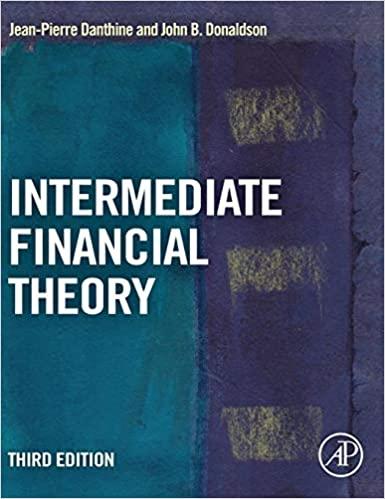Answered step by step
Verified Expert Solution
Question
1 Approved Answer
Bonds Valuation: Determinants of Market Interest Rate risk-free rate plus a default risk premium plus a liquidity premium plus a maturity risk premium. The real
 Bonds Valuation: Determinants of Market Interest Rate risk-free rate plus a default risk premium plus a liquidity premium plus a maturity risk premium. The real risk-free rate of interest may be thought of as the interest rate on U.S. Treasury securities in an inflation-free world. A Treasury Inflation-Protected Security (TIPS) is free of most risks, and its value free rate assumes that, despite the recent downgrade, Treasury securities have no meaningful default risk. The inflation premium is equal to the average expected inflation rate over the life of the security. Default means that a borrower will not make scheduled interest or principal payments, and it affects the market interest rate on a bond. The the bond's risk of default, the higher the market rate. The average default risk premium varies over time, and it tends to get when the economy is weaker and borrowers are more likely to have a hard time paying off their debts. A liquid asset can be converted to cash quickly at a "fair market value." Real assets are generally liquid than financial assets, but different financial assets vary in their liquidity. Assets with higher trading volume are generally liquid. The average liquidity premium varies over time. The prices of long-term bonds Therefore, a exposed to whenever interest rates rise. Because interest rates can and do occasionally rise, all long-term bonds, even Treasury bonds, have an element of risk called risk premium, which is higher the longer the term of the bond, is included in the required interest rate. While long-term bonds are heavily exposed to risk. Although investing in short-term T-bills preserves one's rate risk. rate risk, short-term bills are heavily stable than the interest income on long-term bonds. Quantitative Problem: risk premium on relevant 5 -year securities is 1%. a. What is the yield on a 1-year T-bill? Do not round intermediate calculations. Round your answer to one decimal place. % b. What is the yield on a 5-year T-bond? Do not round intermediate calculations. Round your answer to one decimal place. % c. What is the yield on a 5-year corporate bond? Do not round intermediate calculations. Round your answer to one decimal place. %
Bonds Valuation: Determinants of Market Interest Rate risk-free rate plus a default risk premium plus a liquidity premium plus a maturity risk premium. The real risk-free rate of interest may be thought of as the interest rate on U.S. Treasury securities in an inflation-free world. A Treasury Inflation-Protected Security (TIPS) is free of most risks, and its value free rate assumes that, despite the recent downgrade, Treasury securities have no meaningful default risk. The inflation premium is equal to the average expected inflation rate over the life of the security. Default means that a borrower will not make scheduled interest or principal payments, and it affects the market interest rate on a bond. The the bond's risk of default, the higher the market rate. The average default risk premium varies over time, and it tends to get when the economy is weaker and borrowers are more likely to have a hard time paying off their debts. A liquid asset can be converted to cash quickly at a "fair market value." Real assets are generally liquid than financial assets, but different financial assets vary in their liquidity. Assets with higher trading volume are generally liquid. The average liquidity premium varies over time. The prices of long-term bonds Therefore, a exposed to whenever interest rates rise. Because interest rates can and do occasionally rise, all long-term bonds, even Treasury bonds, have an element of risk called risk premium, which is higher the longer the term of the bond, is included in the required interest rate. While long-term bonds are heavily exposed to risk. Although investing in short-term T-bills preserves one's rate risk. rate risk, short-term bills are heavily stable than the interest income on long-term bonds. Quantitative Problem: risk premium on relevant 5 -year securities is 1%. a. What is the yield on a 1-year T-bill? Do not round intermediate calculations. Round your answer to one decimal place. % b. What is the yield on a 5-year T-bond? Do not round intermediate calculations. Round your answer to one decimal place. % c. What is the yield on a 5-year corporate bond? Do not round intermediate calculations. Round your answer to one decimal place. % Step by Step Solution
There are 3 Steps involved in it
Step: 1

Get Instant Access to Expert-Tailored Solutions
See step-by-step solutions with expert insights and AI powered tools for academic success
Step: 2

Step: 3

Ace Your Homework with AI
Get the answers you need in no time with our AI-driven, step-by-step assistance
Get Started


